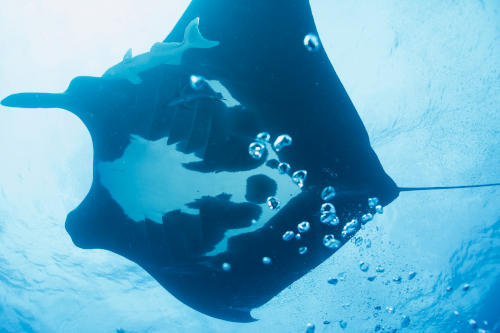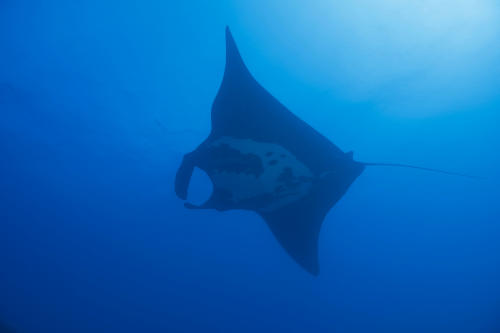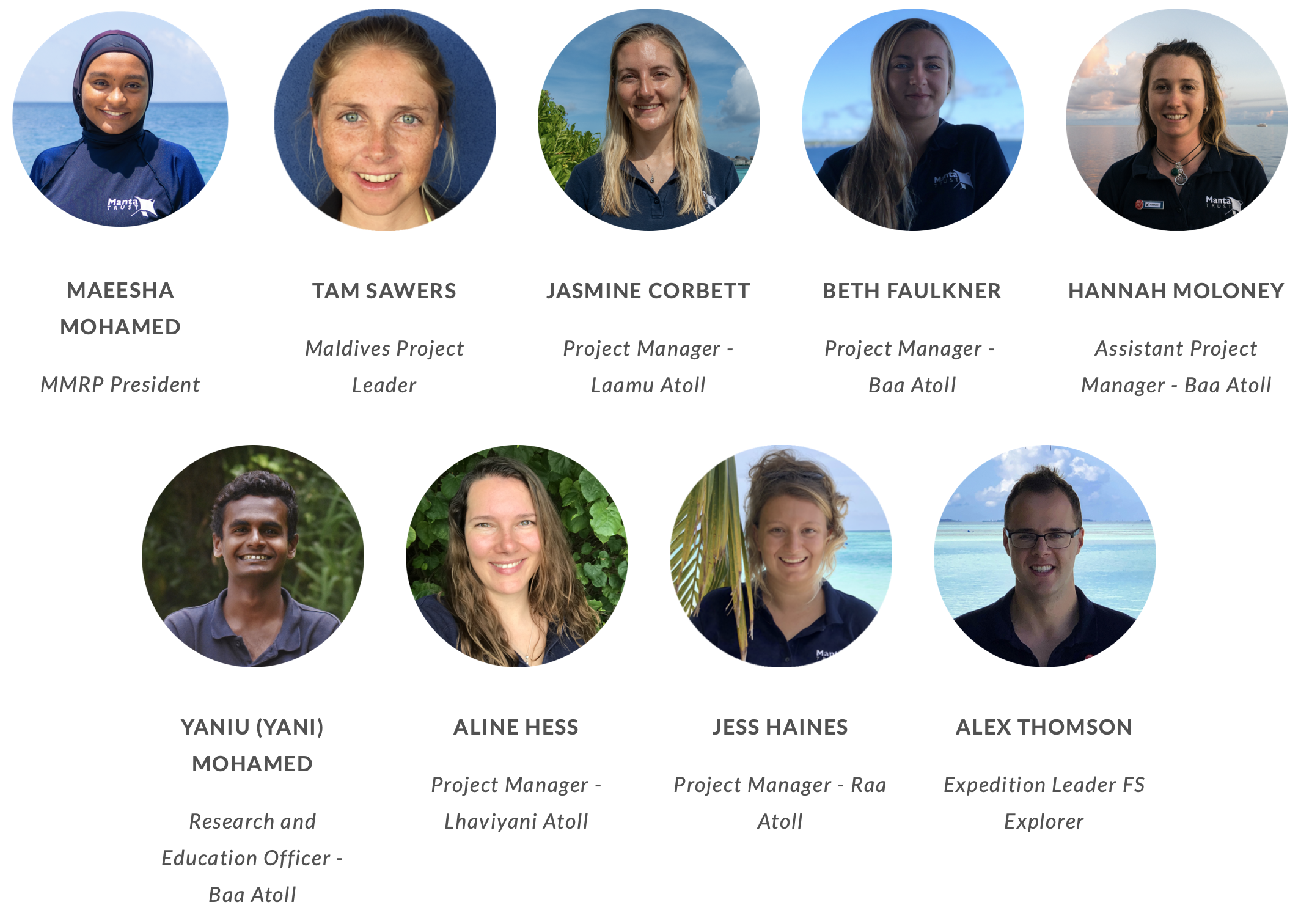Manta Trust
Mantas in the Maldives
Research and Conservation
--> Visit the Manta Trust Website <--
Most commonly found in warm tropical waters, manta rays are pelagic creatures that travel alone and in groups known as a squadron. Despite weighing more than 3,000 pounds, manta rays feed on small aquatic life like plankton. Pelagic life enthusiasts are drawn to manta rays not only because of their size but for their playful, curious temperament, and without any teeth or sting, they are perfectly safe to swim alongside. Mantas are believed to be extremely intelligent as they have the largest brains of all fish, and they live up to around 40 years. They are also creatures of habit, often returning to the same “cleaning stations” where smaller animals feed off the parasites on their bodies.


Reef mantas, a large ray species, frequent Maldivian waters all year round but exist primarily in the western side of the atolls from November to April and on the eastern side from May to October. Scuba divers frequent the Baa and Addu atolls. The Baa atoll draws in hundreds of manta rays to feast on the zooplankton each year. Here, the mantas coexist with other creatures like whale sharks. At the Addu Atoll, manta rays glide through the water year-round, some of which have a wingspan of more than five meters.
Despite their significant presence in the ocean and admiration from divers, manta rays remain a mystery. Formed in 2011, the Manta Trust is dedicated to research that furthers understanding and works to conserve rays and their habitats. Unfortunately, according to the International Union for Conservation of Nature, the species are considered vulnerable due to pollution and commercial fishing threats. In response, the organization is founded on protecting this unique species of aquatic life.
The Manta Trust’s team has over 20 projects across the globe and collaborates with businesses, governments, individuals, and local communities to execute them. The organization is committed to education, specifically in using manta rays as an introduction to ecosystem conservation as a whole to ensure the long-term survival of these creatures.
The organization has also cataloged more than 5,100 manta rays in its database. This is done by logging the spot patterns on their stomachs as each manta ray’s spot pattern is unique, essentially acting as a fingerprint. In turn, this is used to track the mantas to learn their migration patterns, find which habitats are essential to their feeding and reproduction, and thus aids in the organization making educated decisions over how to best manage and conserve this species. Manta ray fanatics can take part in this effort to catalog the creature as the Manta Trust has an online portal in which people can submit images of manta ray stomachs that they find from their diving and snorkeling adventures.
In 2020 alone, the organization published 11 peer-reviewed papers exploring genetic analysis, behavior, and migration patterns. In addition to their research, the Manta Trust works with Fish Free February to raise awareness about the dangers of commercial fishing and works alongside the Protect Maldives Seagrass campaign to encourage businesses to protect seagrass beds instead of causing harm to them. The organization also played a role in adding manta rays to the Maldives’ protected species.
The Manta Trust Maldives Team
--> Visit the Manta Trust Website <--
